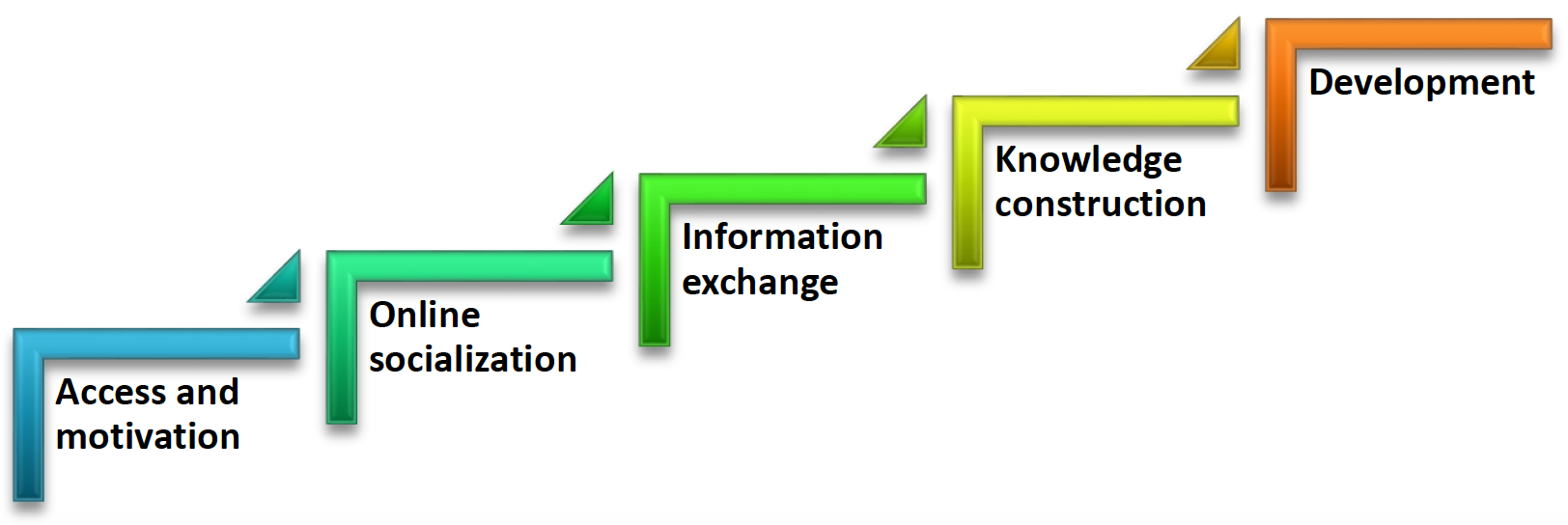E-tivities are activities that involve two or more people engaged in online collaboration. Salmon (2004, p. 11), has gone to a great length to develop a five-stage model of a structured scaffolding process which helps learners to pace through online programs, Image 3.

Image: Escalating learners’ familiarization with technology and processes. Source: Salmon, 2004, p. 11.
As seen in this image, the stages support learners to move from mere access to the full development of activities through collaboration with the others. This demands both technological and methodological familiarization. That is, students need to become familiar both with the use of technology and the numerous ways of communicating and collaborating with other learners. Salmon accepts that less experienced users will need more time to go through the initial two or three stages, while others (usually the more experienced with technology) will shift through the top at a speedy pace. Both groups will have to understand the terms and conditions of online asynchronous or synchronous interaction before they embark on more in-depth investigations and free development of ideas. Briefly, each of these five stages facilitates the following functions:
Access and motivation: At stage 1 individuals’ access is established, and participants are offered an induction to the course.
Online socialization: Learners set up their online identities (profiles), get to know each other and find people to begin interaction with.
Information exchange: Students start to exchange information and collaborate (on some short and easy tasks maybe)?
Knowledge construction: Group discussion and collaboration grow in length, depth and difficulty.
Development: Learners exercise choice, search for “more benefits from the system to help them achieve personal goals and reflect on the learning process” (Salmon, 2004, p. 11).